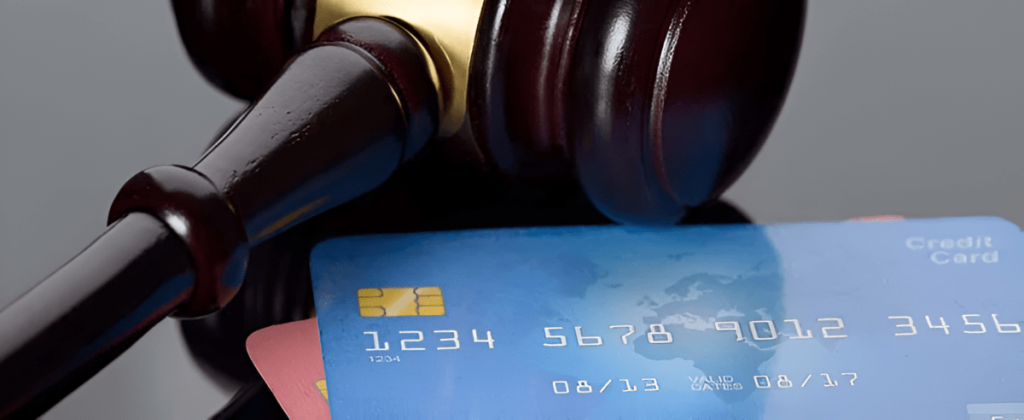Chargebacks are a critical component of payment processing, designed to protect consumers but often challenging for merchants. Understanding the rules and regulations governing chargebacks is essential for minimizing losses and maintaining business health. This guide outlines the legal framework, card network-specific rules, the chargeback process, management strategies, and recent updates.
Legal Framework for Chargebacks
Chargebacks are governed by several key pieces of legislation that define the rights and responsibilities of consumers, merchants, and financial institutions.
1. The Fair Credit Billing Act (FCBA)
- Year Enacted: 1974
- Purpose: Protects consumers from unfair billing practices, including unauthorized transactions, billing errors, and defective goods.
- Key Provisions: Consumers can dispute charges and are not liable for more than $50 in fraudulent charges. Consumers have 60 days from the statement date to file a dispute. The issuer must respond within 30 days and resolve the dispute within 90 days.
2. The Electronic Fund Transfer Act (EFTA)
- Year Enacted: 1978
- Purpose: Extends chargeback rights to debit card transactions.
- Key Provisions: Regulation E under the EFTA outlines consumer protections, including timeframes for reporting unauthorized transactions.
3. Uniform Commercial Code (UCC)
- Purpose: Standardizes commercial transaction laws across the United States, including chargeback provisions under Article 4.
- Key Provisions: Ensures consistent chargeback procedures across states, offering merchants a predictable legal environment.
Card Network-Specific Rules
Different card networks have their own sets of rules and regulations regarding chargebacks. Understanding these differences is crucial for managing disputes effectively.
1. Visa Chargeback Rules
- Time Limits: Cardholders have up to 120 days to file a chargeback, depending on the reason code. Merchants typically have 30 days to respond.
- Reason Codes: Visa provides specific reason codes for different types of disputes, such as fraud, non-receipt of goods, or processing errors.
- Compelling Evidence 3.0: Visa’s recent update requires more detailed evidence to dispute fraudulent claims, including data points like IP addresses and customer history.
2. Mastercard Chargeback Rules
- Time Limits: Similar to Visa, Mastercard allows up to 120 days for cardholders to initiate a chargeback. Merchants have 45 days to respond.
- Excessive Chargeback Program: Merchants with high chargeback ratios may be enrolled in this program, facing increased scrutiny and potential fines.
- Monitoring and Reporting: Banks must report merchants who exceed chargeback thresholds to Mastercard monthly.
3. American Express and Discover
- Time Limits: Both networks allow cardholders 120 days to file a chargeback, but the timeframe for merchant responses varies, with American Express often being shorter.
- Unique Challenges: American Express has a reputation for being more consumer-friendly, resulting in higher chargeback rates for merchants.

The Chargeback Process
Understanding the chargeback process from start to finish is critical for merchants to manage disputes effectively.
Step-by-Step Overview:
- Initiation: A cardholder disputes a charge with their issuer.
- Issuance of Chargeback: The issuer assesses the claim’s validity and, if valid, issues a chargeback, debiting the merchant’s account.
- Merchant Response: The merchant receives a chargeback notification and must provide evidence to dispute it.
- Resolution: Based on the evidence, the issuer either reverses or upholds the chargeback. If upheld, the funds are permanently removed from the merchant’s account.
Table 1: Chargeback Timeframes and Fees by Card Network
| Card Network | Time to File Chargeback (Days) | Time for Merchant Response (Days) | Average Chargeback Fee |
|---|---|---|---|
| Visa | 120 | 30 | $20-$50 |
| Mastercard | 120 | 45 | $25-$100 |
| American Express | 120 | 20 | $25-$75 |
| Discover | 120 | 20 | $30-$75 |
Chargeback Management Strategies
Effective chargeback management is essential for minimizing losses and maintaining a low chargeback ratio. Here are some key strategies:
1. Monitor Chargeback Ratios
- Thresholds: Most networks consider a ratio above 1% problematic. Exceeding this can result in fines or loss of processing privileges.
2. Implement Fraud Prevention Tools
- Tools: Utilize tools such as 3D Secure, AVS (Address Verification Service), and CVV verification to reduce fraud-related chargebacks.
- Data Collection: Collect and store data such as IP addresses, digital signatures, and delivery confirmations to use as evidence in chargeback disputes.
3. Partner with Experts
- Third-Party Services: For merchants who receive numerous chargebacks, partnering with a third-party service can streamline management and improve dispute outcomes.
- Example: Merchanto.org, an official partner of Visa and Mastercard, offers comprehensive chargeback prevention and management services. Their solutions help merchants reduce chargeback ratios and prevent fraud. Merchanto.org
Table 2: Common Chargeback Reasons and Prevention Tactics
| Chargeback Reason | Description | Prevention Tactics |
|---|---|---|
| Fraud | Unauthorized transaction, often due to stolen cards. | Use 3D Secure, AVS, and CVV checks. |
| Non-Receipt of Goods | Customer claims they did not receive the purchased item. | Provide tracking numbers and delivery confirmation. |
| Processing Error | Incorrect amount charged, duplicate transactions. | Double-check transaction details before processing. |
| Unrecognized Transaction | Customer does not recognize the merchant or transaction. | Ensure clear billing descriptors and customer communication. |

Recent Changes and Updates
The chargeback landscape is constantly evolving, with recent changes impacting how merchants handle disputes.
1. Visa’s Compelling Evidence 3.0
- Implementation Date: 2023
- Key Changes: Requires more detailed evidence when disputing fraud-related chargebacks, including linking previous successful transactions to the disputed one, showing a pattern of legitimate activity.
2. Mastercard’s Revised Timeframes
- New Time Limits: Mastercard has shortened the timeframe for merchants to respond to certain chargebacks, emphasizing the need for prompt action.
3. Increased Focus on High-Risk Merchants
- Monitoring: Both Visa and Mastercard are increasing scrutiny on merchants with high chargeback ratios, implementing stricter monitoring and potential fines for non-compliance.
Table 3: Recent Changes in Chargeback Regulations by Card Network
| Network | Update | Impact on Merchants |
|---|---|---|
| Visa | Compelling Evidence 3.0 | Requires more detailed evidence for fraud-related disputes. |
| Mastercard | Revised Merchant Response Timeframes | Shortens the time available to respond to certain disputes. |
| American Express | Increased Scrutiny on High-Risk Merchants | More frequent monitoring and potential fines. |
| Discover | Enhanced Security Measures | Encourages adoption of advanced fraud prevention tools. |
Conclusion
Chargebacks are a necessary component of payment processing, protecting consumers while posing challenges for merchants. By understanding the legal framework, adhering to card network-specific rules, and implementing effective management strategies, merchants can significantly reduce the impact of chargebacks on their business.
Key Points:
- Understand and adhere to card network-specific rules to avoid penalties.
- Monitor your chargeback ratio to stay below critical thresholds.
- Implement comprehensive fraud prevention tools to minimize the risk of chargebacks.
- Stay informed about recent regulatory changes to adapt your strategies accordingly.



